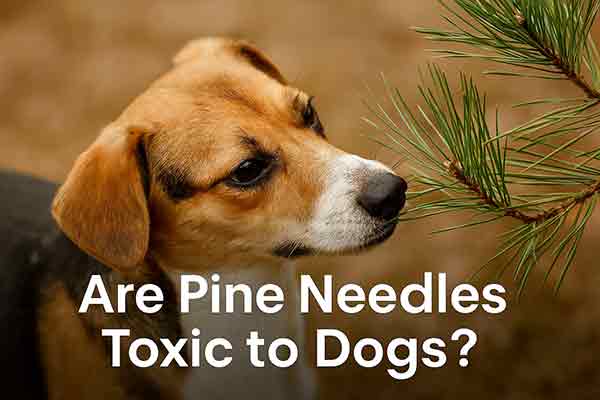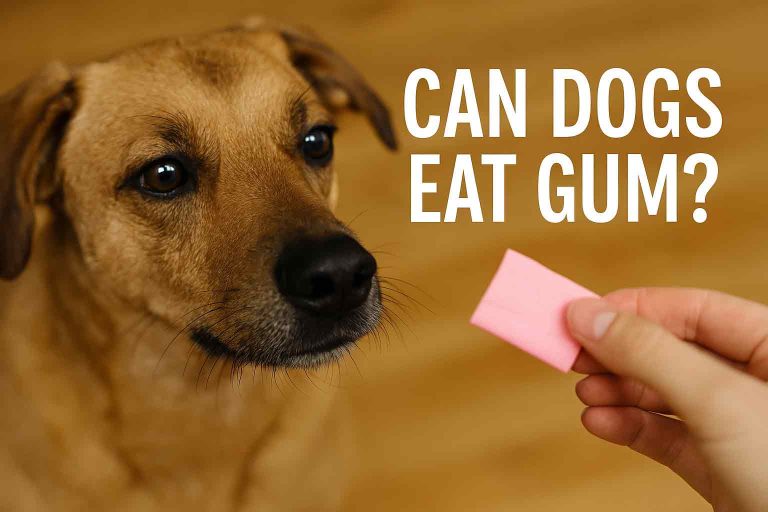Are Pine Needles Toxic to Dogs? | Risks, Symptoms & Pet Safety Tips
Table of Contents
- Introduction
- What Are Pine Needles?
- Are Pine Needles Toxic to Dogs?
- Why Do Dogs Eat Pine Needles?
- Potential Dangers of Pine Needle Ingestion
- Symptoms of Pine Needle Toxicity in Dogs
- What to Do If Your Dog Eats Pine Needles
- Safe Alternatives to Pine Needles
- How to Prevent Pine Needle Ingestion
- Conclusion
Introduction
If you have pine trees in your yard or use a live pine tree for the holidays, you may wonder: Are pine needles toxic to dogs? This is a common concern among pet owners, especially during fall and winter when pine needles are more likely to litter the ground. In this article, we’ll explore the potential risks associated with pine needles, the symptoms to watch for, and how to keep your furry friend safe year-round.
What Are Pine Needles?
Pine needles are the long, slender leaves of pine trees. They are sharp, often aromatic, and can fall in large quantities. While they’re a natural part of the environment, they can pose risks to curious dogs who sniff, chew, or even ingest them.
Are Pine Needles Toxic to Dogs?
Yes and no. While pine needles themselves are not considered highly toxic, they can cause mechanical and gastrointestinal irritation. Ingesting pine needles can lead to vomiting, diarrhea, and even intestinal blockages or perforations in severe cases. Additionally, some types of pine (like Norfolk pine or yew) can be more problematic than others due to mild toxic properties or sap oils.
Furthermore, the oils and sap from pine trees can irritate a dog’s mouth and stomach lining. Pine-scented cleaning products and artificial trees with chemical coatings can also introduce hazards unrelated to the needles themselves.
Why Do Dogs Eat Pine Needles?
Dogs may chew or eat pine needles for several reasons:
- Curiosity: Especially in puppies who explore with their mouths
- Boredom: Dogs left alone outside may nibble on yard debris
- Texture: Some dogs like the crunchy feel of dried needles
- Dietary deficiencies: Dogs with pica may eat non-food items
- Scent attraction: Pine smells may trigger interest
Potential Dangers of Pine Needle Ingestion
While a small amount of pine needle ingestion may not always lead to symptoms, there are several health risks to be aware of:
- Gastrointestinal irritation: Sharp edges can scratch the esophagus, stomach, or intestines.
- Intestinal blockage: Ingested needles may clump together, causing obstruction.
- Vomiting and diarrhea: Due to physical irritation or mild toxicity.
- Mouth injuries: Needles may lodge between teeth or poke the gums and throat.
- Exposure to pesticides: Needles from treated trees may carry harmful chemicals.
Symptoms of Pine Needle Toxicity in Dogs
If your dog has ingested pine needles or tree material, monitor them closely for signs of distress:
- Drooling or pawing at the mouth
- Vomiting or dry heaving
- Diarrhea or constipation
- Lethargy or weakness
- Abdominal pain or bloating
- Loss of appetite
- Signs of discomfort during defecation
If any of these symptoms occur—especially if persistent—seek veterinary attention right away.
What to Do If Your Dog Eats Pine Needles
If you catch your dog chewing or swallowing pine needles, follow these steps:
- Remove access: Prevent further ingestion by cleaning up the area.
- Rinse mouth (if safe): You may gently rinse your dog’s mouth with water if irritation is evident.
- Watch closely: Observe for signs of digestive upset.
- Call your vet: They may recommend monitoring or an examination depending on the situation.
- Don’t induce vomiting: Unless specifically directed by a vet, this could worsen internal injuries.
Safe Alternatives to Pine Needles
If you want to maintain a festive or natural environment while keeping your dog safe, consider:
- Artificial trees without toxic coatings
- Pine needle-free mulches (like cedar or rubber mulch)
- Dog-safe holiday scents: Avoid essential oils; opt for dog-friendly diffusers
- Barriers: Keep pets away from holiday trees or pine-heavy garden areas
How to Prevent Pine Needle Ingestion
- Vacuum regularly during the holidays or if you have pine trees nearby
- Supervise your dog outdoors or around decorated areas
- Train the “leave it” and “drop it” commands
- Provide stimulating toys to prevent boredom chewing
- Clean up fallen needles or cones promptly
Proactive prevention is the best way to protect your pet from unintentional harm.
Conclusion
So, are pine needles toxic to dogs? While not highly toxic, they can pose real risks due to their sharpness, sap, and potential chemical exposure. If you have a curious pup, it’s best to limit their access to pine needles and keep a watchful eye during pine-heavy seasons or holiday decorating. Knowing the symptoms and acting quickly can make all the difference if your dog gets into something they shouldn’t.
Want more tips on seasonal pet safety, toxic plants, and dog-proofing your home? Explore our blog for expert-backed guidance and peace of mind.







